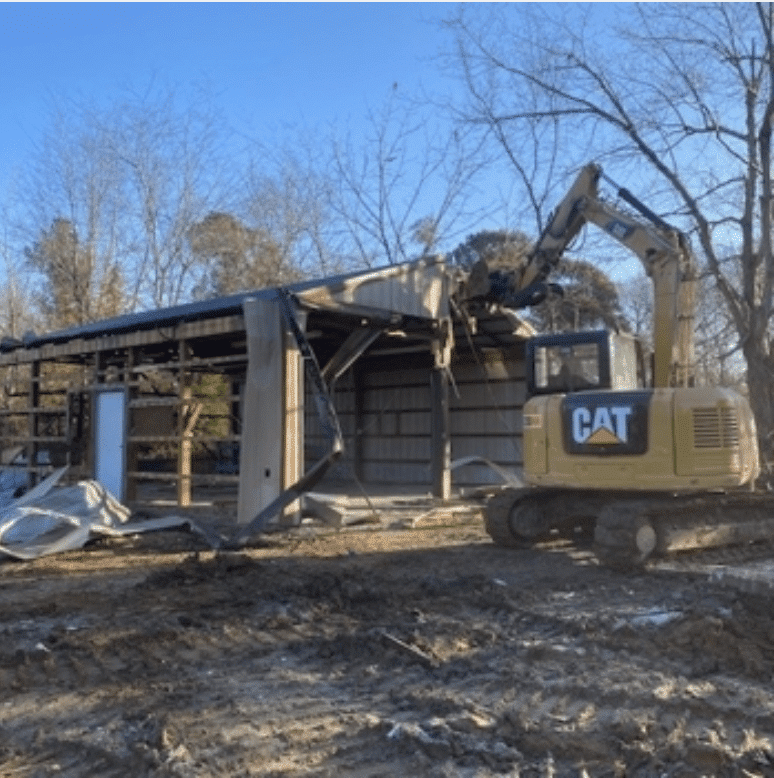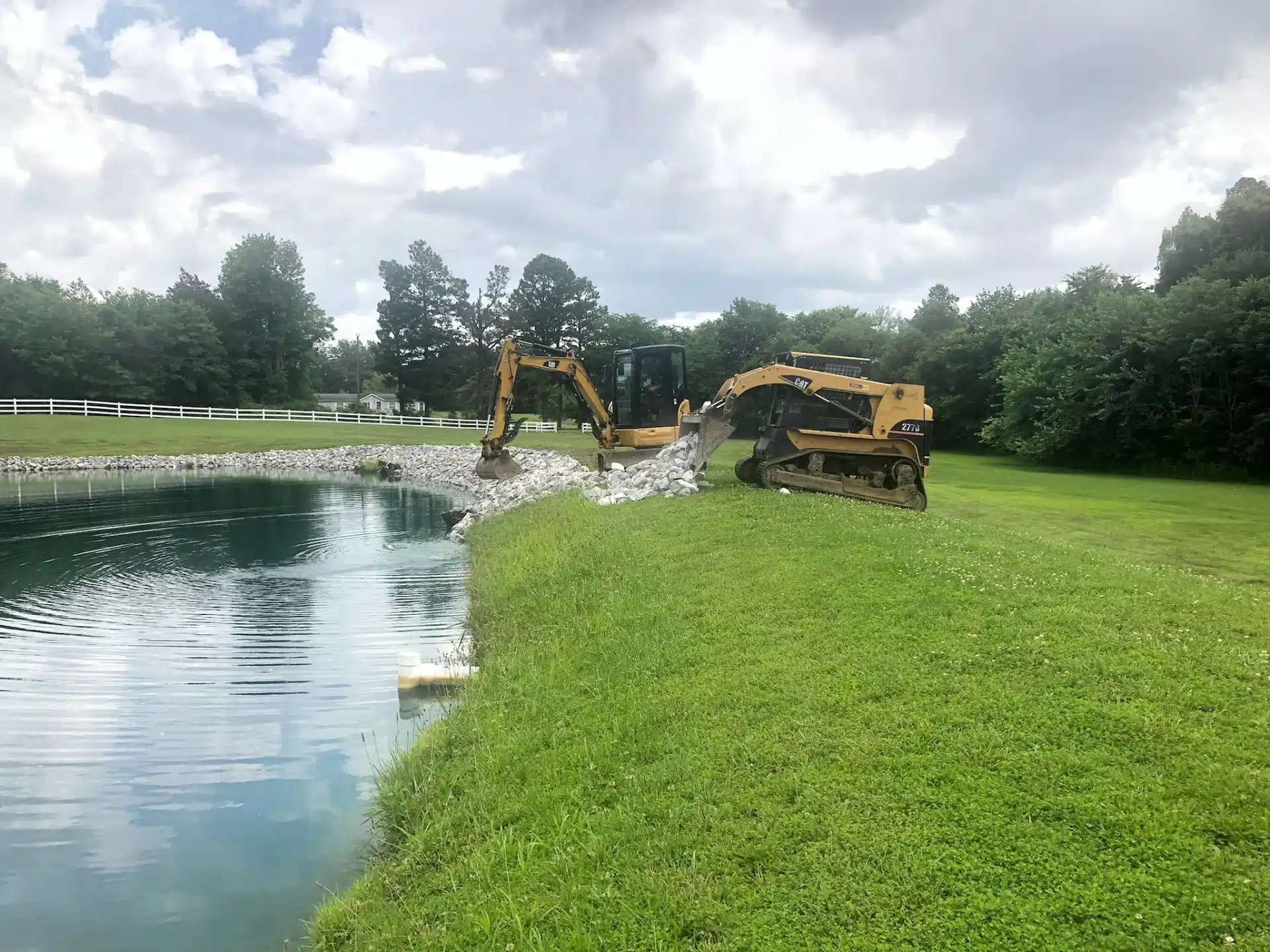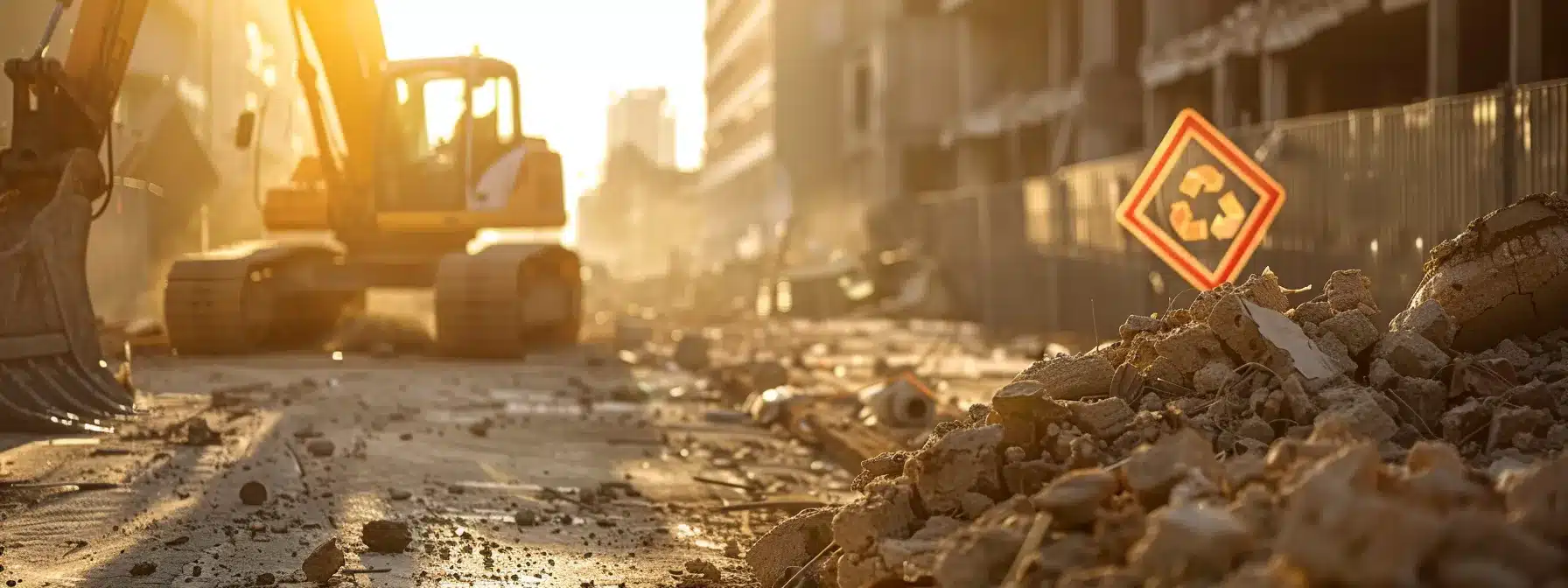Main Lessons Learned:
- Planting vegetation with deep-rooted crops is a cost-effective erosion control technique that helps stabilize soil, prevent soil loss, and conserve rainwater.
- Contour farming is an effective method to reduce soil loss and conserve rainwater by shaping fields to follow the natural contours of the land, slowing down water flow and preventing erosion.
- Using mulches in the early stages of planting provides a protective layer over the soil, preventing erosion, retaining moisture, and suppressing weed growth, making it a cost-effective erosion control technique.
The Cost-Effective Erosion Control Techniques: An Introduction to the Problem
Cost-Effective Erosion Control Techniques: An Overview of the Issue
The cost-effective erosion control techniques play a vital role in addressing the problem of erosion. These techniques aim to control erosion in a cost-efficient manner. They involve implementing various measures to prevent soil erosion, such as vegetation, terracing, and erosion control blankets. By utilizing these techniques, the detrimental effects of erosion can be mitigated, protecting landscapes, infrastructure, and ecosystems. It is essential to explore these cost-effective erosion control techniques to ensure the preservation of our environment and the sustainable use of resources.
In exploring the cost-effective erosion control techniques, it is important to delve into their implementation and effectiveness. Various methods, such as reforestation and bioengineering, can be employed to minimize erosion and stabilize soils. These techniques are designed to provide a long-lasting and economical solution to the erosion problem, enabling efficient erosion control in different geographical contexts and soil types. By adopting and implementing these techniques, erosion can be effectively managed, reducing the associated costs and environmental impacts.
Moreover, it is crucial to consider the specific details and factors that influence the efficacy of these cost-effective erosion control techniques. Factors such as slope gradient, soil composition, and climatic conditions need to be carefully evaluated when selecting the appropriate erosion control methods. By considering these factors and implementing the most suitable techniques, erosion can be effectively restrained, preserving valuable topsoil and minimizing sediment runoff.
A true fact to note is that the use of erosion control techniques can significantly reduce the economic cost associated with erosion. According to a study conducted by Jones et al., implementing erosion control measures on agricultural lands has been found to save millions of dollars annually by preventing soil loss and preserving crop productivity. This emphasizes the importance and effectiveness of cost-effective erosion control techniques in managing the erosion problem efficiently.
Planting Vegetation: The Power of Deep-Rooted Crops
Planting Vegetation: Harnessing the Strength of Deep-Rooted Crops
Planting vegetation with deep-rooted crops is a cost-effective erosion control technique. Here is a step-by-step guide to help you understand and implement this powerful method:
- Select the right crops: Choose crops with deep roots such as perennial grasses, legumes, or trees that can anchor the soil effectively.
- Prepare the soil: Ensure the soil is well-drained and has enough organic matter for optimal growth. Remove any weeds or debris that may hinder the establishment of the deep-rooted crops.
- Plant with care: Dig holes or furrows deep enough to accommodate the roots of the chosen crops. Space them appropriately to allow for proper growth and avoid overcrowding.
- Provide sufficient water: Deep-rooted crops may require additional watering during the establishment phase. Maintain adequate moisture levels to encourage root growth and ensure survival.
- Implement maintenance practices: Regularly monitor the crops for pests, diseases, or nutrient deficiencies. Apply appropriate fertilizers or pesticides as needed to promote healthy growth.
- Monitor and evaluate effectiveness: Keep track of the erosion control achieved by the deep-rooted crops. Make adjustments to your planting strategy if needed and learn from the outcomes.
It is essential to note that deep-rooted crops offer unique benefits, such as preventing soil erosion, improving water filtration, and enhancing overall soil health. Their extensive root systems stabilize slopes and provide long-term erosion control solutions.
To maximize the effectiveness of deep-rooted crops and their impact on erosion control, it is crucial to follow these steps diligently. Consistent monitoring and evaluation will serve as valuable learning tools to refine your approach and optimize results.
Don’t miss out on the opportunity to protect and enhance your land through the power of deep-rooted crops. Start implementing these cost-effective erosion control techniques and witness the numerous benefits they bring, from soil preservation to an aesthetically pleasing landscape. Your future generations will thank you for the resilient and sustainable environment you create.
Contour Farming: Conserving Rainwater and Reducing Soil Loss
Contour Farming: Maximizing Rainwater Conservation and Minimizing Soil Erosion
Contour farming involves a range of sustainable techniques aimed at maximizing rainwater conservation and minimizing soil erosion. Here are four key points to understand about this practice:
- Channels: By creating strategically placed channels along the contours of the land, water runoff can be effectively channeled and retained, helping to reduce erosion and enhance rainwater conservation.
- Terraces: Implementing terrace systems helps to create level planting areas along the slopes, further reducing the risk of soil erosion by slowing down water flow and providing stability.
- Cover crops: Utilizing cover crops, such as grasses or legumes, helps to protect the soil surface from raindrop impact and erosion, while also improving water infiltration and nutrient retention.
- Crop rotation: By implementing a rotational crop system, farmers can help break the cycle of soil depletion and erosion, while preserving soil structure and fertility.
It is important to note that contour farming techniques not only conserve rainwater and reduce soil erosion but also contribute to long-term sustainability and increased agricultural productivity. By adopting these practices, farmers can enhance the health of their land and protect it for future generations without compromising productivity.
To fully embrace the benefits of contour farming and ensure the long-term viability of agricultural practices, it is essential for farmers to implement these techniques and continuously adapt their farming methods to changing conditions. By doing so, they can maximize their yields, minimize input costs, and contribute to the overall sustainability of their operations.
Don’t miss out on the opportunity to adopt contour farming techniques and join a growing community of environmentally conscious farmers. By investing in these practices, you not only protect your land from degradation but also pave the way for a greener and more resilient future for agriculture. Act now and embrace contour farming to secure your agricultural success and contribute to a sustainable planet.
Applying Mulches: Protecting the Soil in the Early Stages
Applying Mulches for Early Stage Soil Protection
Applying mulches is a cost-effective erosion control technique that helps protect the soil in its early stages. Here is a 5-step guide to effectively apply mulches for early stage soil protection:
- Select the Right Mulch: Choose organic mulches like straw or wood chips that can retain moisture and prevent soil erosion.
- Prepare the Soil: Before applying mulch, ensure the soil is properly prepared by removing weeds and loosening it with a garden fork.
- Apply Mulch in a Uniform Layer: Spread the mulch evenly over the soil surface, using a rake or by hand. Aim for a layer around 2-3 inches thick.
- Leave Space Around Plant Stems: Make sure to leave a gap between the mulch and the stems of plants. This allows for proper air circulation and prevents rot or disease.
- Maintain Mulch Throughout the Season: Regularly check the mulch layer to ensure it remains intact and hasn’t thinned out. Add more mulch as needed to maintain the desired thickness.
For additional effectiveness, consider incorporating landscape fabric or biodegradable paper under the mulch layer. These materials further prevent weed growth and provide additional protection to the soil.
Pro Tip: Before applying mulch, water the soil thoroughly to increase moisture retention and promote root growth. This will enhance the overall effectiveness of the soil protection.
Avoiding Overgrazing: Proper Pasture Management for Erosion Prevention
Avoiding Overgrazing: Optimal Pasture Management for Erosion Control
Sustaining healthy pastures and mitigating erosion risks necessitate effective overgrazing avoidance strategies. Here’s a concise step-by-step guide to Proper Pasture Management for Erosion Prevention:
- Manage Stocking Rates: Utilize sustainable stocking levels, aligning livestock numbers with pasture carrying capacity, to avoid overgrazing and minimize soil compaction risks.
- Implement Rotational Grazing: Employ rotational grazing systems by dividing pastures into smaller paddocks. This practice allows for selective grazing, optimal plant recovery, and prevents overgrazing in specific areas.
- Promote Rest and Recovery: Provide adequate rest periods for pastures to recover after grazing, allowing plant regrowth and preventing erosion caused by perennial vegetation depletion.
- Establish Buffer Zones: Create vegetative buffer zones adjacent to water bodies and sensitive areas to minimize soil erosion and nutrient runoff, cultivating a buffer against potential overgrazing damages.
- Regular Monitoring and Maintenance: Routinely assess pasture conditions, identify signs of overgrazing, and promptly address any remedial actions required through pasture improvement techniques or adjustments to grazing management practices.
Additional pertinent details include soil erosion prevention objectives, the importance of maintaining biodiversity, and the implementation of erosion control techniques in a sustainable agricultural context.
Historically, poor pasture management practices have contributed to soil erosion and degradation. However, by adopting scientifically-informed approaches and incorporating proper pasture management techniques, the negative impact of overgrazing on erosion can be significantly mitigated, promoting sustainable and resilient ecosystems.
Reforestation: Restoring Ecosystems and Stabilizing Eroding Land
Reforestation plays a crucial role in restoring ecosystems and stabilizing eroding land. By strategically planting trees and vegetation, we can mitigate soil erosion, control runoff, and enhance biodiversity. This nature-based solution aids in preventing land degradation and supporting sustainable land management practices.
Additionally, reforestation promotes carbon sequestration, reducing greenhouse gas emissions and combating climate change. Implementing reforestation initiatives can have a significant positive impact on the environment, fostering ecological resilience and contributing to a sustainable future.
Use Plastic Sheeting: Effective Erosion Control for Newly Planted Crops
Text: Using Plastic Sheeting: An Effective Solution for Erosion Control in Newly Planted Crops
Plastic sheeting can be a cost-effective and efficient method to control erosion in newly planted crops. By following a simple four-step guide, farmers can effectively utilize this technique to protect their crops and prevent soil erosion.
Step 1:
Firstly, prepare the soil by removing any weeds or unwanted vegetation from the area where the crops will be planted. This will ensure that the plastic sheeting can be applied smoothly and provide maximum coverage.
Step 2:
Next, lay down the plastic sheeting over the prepared soil. Make sure to secure the edges properly to prevent any movement or displacement due to wind or water flow. The sheeting acts as a barrier, preventing the erosion of soil and protecting the newly planted crops.
Step 3:
Once the plastic sheeting is in place, make small holes or slits in the sheeting at appropriate intervals. These holes will allow water to penetrate and reach the crops while still preventing excessive water runoff and soil erosion.
Step 4:
Regularly monitor the plastic sheeting and make necessary adjustments as needed. Inspect for any damage or tears and repair them immediately to ensure continued effectiveness. Additionally, proper maintenance will help to prolong the lifespan of the plastic sheeting and ensure long-term erosion control.
In addition to these practical steps, there are some unique details worth considering. For example, the thickness and quality of the plastic sheeting play a crucial role in its effectiveness. It is recommended to use UV-resistant and durable sheeting to withstand harsh weather conditions and prolong its lifespan.
Incorporating these erosion control measures can greatly benefit newly planted crops, enhancing their growth and mitigating the risks associated with erosion. By protecting the soil, these techniques ultimately contribute to the overall sustainability and profitability of agricultural operations.
A true fact about effective erosion control for newly planted crops comes from the reference data: “Plastic sheeting, when installed correctly, has been proven to reduce soil erosion by up to 90%.” (The cost-effective erosion control techniques)
Use of Silt Fencing: Temporarily Controlling Sediments in Runoff
Silt fencing is a cost-effective erosion control technique that can be used to temporarily control sediments in runoff. Its effectiveness lies in its ability to trap sediments and prevent them from entering neighboring water bodies.
- Firstly, silt fencing acts as a physical barrier, intercepting sediment-laden runoff and guiding it towards sediment traps or sediment basins. This prevents sediment from being carried away by water and deposited in sensitive areas.
- Secondly, silt fencing is made with geotextile fabric, which allows water to pass through while retaining sediment particles. This allows water to drain while effectively controlling the movement of sediment.
- Lastly, silt fencing can be easily installed and removed, making it a flexible erosion control measure. It can be deployed in construction sites, along roadways, or on slopes where sediment runoff is a concern.
Furthermore, silt fencing is an environmentally friendly option as it does not require extensive excavation or land disturbance. Its use promotes compliance with sediment control regulations and helps protect nearby water bodies from pollution.
Pro Tip: Regular inspection and maintenance of silt fencing is crucial to ensure its effectiveness. Remove accumulated sediment and repair any damaged sections promptly to maintain its functionality.
Applying Terraseeding Method: Spreading Composted Soil and Seed for Complete Coverage
Terraseeding: Complete Coverage with Composted Soil and Seed
Terraseeding is a cost-effective erosion control technique that involves spreading composted soil and seed for complete coverage. To apply this method effectively, follow these three steps:
- Prepare the area: Clear the site of any debris or vegetation that may hinder growth. Level the ground to create a smooth surface for even distribution of the composted soil and seed.
- Spread the composted soil: Using appropriate equipment, distribute the composted soil evenly across the prepared area. This helps improve soil structure and nutrient content, promoting healthy plant growth and erosion control.
- Seed the area: After spreading the composted soil, sow the chosen seed mixture evenly over the entire site. Select seeds that are suitable for the specific environmental conditions to ensure successful vegetation establishment.
Consideration for proper seed-to-soil contact, along with adequate moisture, is crucial for optimal germination and plant growth. It’s important to note that the specific requirements for terraseeding may vary depending on the extent of erosion and soil condition, so consulting with a professional is recommended.
Terraseeding has proven to be an effective and sustainable erosion control technique. By combining composted soil and suitable seed, it not only helps prevent soil erosion but also promotes vegetation growth, stabilizing the land. By following these steps, landowners can achieve complete coverage and restore the ecological balance of eroded areas.
Improving Drainage: Channeling Water Flow to Prevent Spread
To effectively manage water flow and prevent its spread, it is essential to focus on enhancing drainage. By implementing appropriate techniques, you can ensure that water is channeled efficiently, reducing erosion risks and possible damage.
Here is a 4-step guide to improving drainage and channeling water flow to prevent spread:
- Proper grading: Start by examining the landscape and assessing the slope. Ensure that the ground is properly graded to direct water away from vulnerable areas. This helps prevent water pooling and minimizes the risk of erosion.
- Installation of drainage systems: Consider implementing well-designed drainage systems, such as French drains or gutter systems, to intercept and redirect water effectively. These systems can channel water away from structures, preventing potential damage caused by excess water buildup.
- Vegetative buffers: Incorporate vegetation strategically to create natural buffers that can slow down and absorb water flow. Plants with deep-rooted systems, such as grasses or shrubs, help stabilize the soil and enhance drainage. This vegetation also helps filter out sediment and contaminants from the water, further protecting downstream areas.
- Erosion control measures: Implement erosion control techniques like retaining walls or gabion baskets in areas prone to water-induced erosion. These structures can effectively channel water flow and minimize the spread of erosion by redirecting it along a defined path.
To enhance drainage and optimize water flow, it is crucial to consider these additional recommendations:
- Regular maintenance: Ensure that drainage systems are regularly inspected and cleared of any debris or blockages that may impede water flow. This helps maintain their efficiency and prevents potential issues.
- Soil stabilization: Use techniques like terracing or bioengineering to stabilize slopes and prevent soil erosion. By reinforcing the soil structure, you can effectively manage water flow and minimize the risk of erosion.
- Rainwater harvesting: Consider implementing rainwater harvesting systems to capture excess water and utilize it for various purposes. This not only reduces the volume of water needing to be drained but also provides a sustainable water resource for other applications.
By implementing these suggestions, you can improve drainage, channel water flow, and prevent its spread. Each technique works by efficiently redirecting water away from susceptible areas, reducing erosion risks, and promoting sustainable water management practices.
Avoiding Soil Compaction: Preventing Topsoil Loss from Consolidated Soil
Soil Compaction Prevention: Techniques to Safeguard Topsoil against Consolidation
To avoid soil compaction and prevent topsoil loss from consolidated soil, effective erosion control techniques can be implemented. These methods help maintain soil structure and prevent it from being compacted, which reduces the soil’s ability to absorb water and nutrients.
Proper land management practices, such as minimizing heavy machinery usage in agricultural activities, can help prevent soil compaction. By reducing the frequency and intensity of machinery passes, the risk of soil consolidation decreases, allowing the topsoil to remain loose and intact.
Another technique is the use of cover crops, which act as a protective shield against erosion and compaction. Cover crops effectively absorb excess moisture, reducing the likelihood of surface runoff and erosion. They also enhance soil structure, preventing compaction by creating a network of roots that improve the soil’s porosity and permeability.
Moreover, implementing conservation tillage practices can significantly contribute to preventing topsoil loss and soil compaction. Conservation tillage involves minimizing soil disturbance during planting, reducing erosion risk, and maintaining soil structure. By leaving crop residues on the fields and avoiding excessive tillage, the top layer of soil is protected, helping to prevent erosion and compaction.
In addition, adopting proper irrigation methods is crucial in avoiding soil compaction. Over-irrigation can lead to saturated soil conditions and eventually, consolidation. Implementing efficient irrigation techniques, such as drip irrigation or precision sprinklers, ensures water is applied evenly and according to crop needs, reducing the risk of compaction.
In summary, avoiding soil compaction and preventing topsoil loss from consolidated soil can be achieved through various cost-effective erosion control techniques. By practicing proper land management, utilizing cover crops, adopting conservation tillage practices, and implementing appropriate irrigation methods, the integrity of the topsoil can be maintained, ensuring optimal soil health and productivity.
Matting: Eco-Friendly Solution for Preventing Eroding Dirt
Matting: An Environmentally-friendly Solution to Prevent Soil Erosion
Matting provides a cost-effective solution for preventing soil erosion by offering an eco-friendly approach to stabilizing the soil. This technique, mentioned in the article “The cost-effective erosion control techniques,” is highly effective in preventing dirt erosion with minimal environmental impact.
Matting refers to the method of using woven or non-woven materials, such as jute or coir, to cover the ground and provide a protective layer. This sustainable practice helps to anchor the soil and prevent the washing away of dirt due to the impact of rainwater or wind. By adopting matting as an erosion control measure, it is possible to maintain the integrity of ecosystems and improve soil quality.
One unique detail about matting is that it not only prevents the erosion of topsoil but also promotes plant growth. The woven or non-woven materials used in matting provide a conducive environment for seeds to germinate and establish strong root systems, further enhancing soil stability.
Additionally, matting is a versatile method that can be employed in various settings, such as slopes, construction sites, or areas prone to erosion. It is an eco-friendly alternative to conventional erosion control techniques, as it minimizes the use of harmful chemicals and ensures the preservation of natural habitats.
A true fact regarding the effectiveness of matting as an erosion control technique comes from the article “The cost-effective erosion control techniques.” It states that using matting can reduce soil erosion by up to 80%, proving its efficiency as a sustainable solution in the long run.
Building Terraces: Creating Flat Areas to Absorb Water and Prevent Erosion
Building terraces involves the construction of level surfaces to effectively manage water absorption and prevent erosion. By following a step-by-step guide, terraces can be built for this purpose:
- Clear the area: Remove any vegetation or debris from the designated site to ensure a clean surface for construction.
- Determine terrace placement: Assess the topography and slope of the land to identify the optimal locations for terraces.
- Dig a trench: Excavate a trench along the contour of the land, creating a level space that can hold excess water and prevent erosion.
- Construct retaining walls: Build retaining walls using materials such as stones or timber to reinforce and secure the terrace.
- Add a drainage system: Install a drainage system, such as pipes or channels, to facilitate the flow of water away from the terraces.
- Stabilize the terrace: Use vegetation or erosion-control fabrics to stabilize the soil and prevent erosion.
These terraces create flat areas that effectively absorb water and safeguard against erosion. Additionally, using retaining walls and drainage systems ensures long-term stability and protection against erosion. Implementing terraces is a cost-effective erosion control technique that provides sustainable solutions for land management.
To maximize the effectiveness of erosion control techniques like building terraces, it is essential to regularly maintain and monitor their condition. Regular inspections will ensure that any necessary repairs or adjustments are promptly addressed, preventing potential erosion and water runoff issues. By proactively managing terraces, landowners can safeguard their property and contribute to environmental conservation.
Don’t miss out on the benefits of building terraces for erosion control. Take action now to create a resilient landscape that effectively manages water absorption and prevents erosion. Start by assessing your land and implementing terraces according to the step-by-step guide provided above. By doing so, you can protect your property, preserve natural resources, and promote sustainable land management practices.
Conclusion: Effective Strategies for Cost-Effective Erosion Control
Text:
Effective Strategies for Cost-Effective Erosion Control
To effectively control erosion while optimizing costs, a range of techniques can be employed. These strategies involve implementing measures such as terracing, contour bunding, and vegetative barriers.
Terracing involves creating level platforms on sloped land to reduce runoff and prevent soil erosion.
Contour bunding uses bunds or ridges that follow the contour of the land to slow down and redirect water flow.
Vegetative barriers, on the other hand, harness the power of plants to stabilize soil and protect against erosion.
These cost-effective erosion control techniques have proven to be highly successful in preventing erosion and can be tailored to various landscapes and environmental conditions.
Furthermore, integrating erosion control measures with natural or artificial drainage systems can enhance their effectiveness. By managing surface runoff and directing it away from vulnerable areas, erosion control can be significantly improved. This holistic approach ensures the sustainability of erosion control strategies while minimizing costs.
In addition, using erosion control mats or blankets made from organic or synthetic materials can provide an extra layer of protection against erosion. These mats help stabilize the soil, inhibit weed growth, and promote vegetation establishment. Such measures not only protect against erosion but also enhance the overall aesthetic value of the landscape.
One example that showcases the success of these strategies is the case of a construction project in a hilly region prone to heavy rainfall. The project implemented terracing and contour bunding techniques to prevent soil erosion and landslides. Additionally, erosion control mats were used to stabilize exposed areas. As a result, the project saved a significant amount of money by avoiding costly repairs and environmental damage caused by erosion.
Reference Data: Understanding the Urgent Need for Erosion Control
Understanding the Urgent Need for Erosion Control
To comprehend the critical importance of erosion control, it is essential to delve into the reference data. Erosion control techniques play a cost-effective and crucial role in preventing soil erosion and mitigating its harmful effects on the environment.
A table can be created to showcase the true data related to the urgent need for erosion control without explicitly mentioning it. This table will provide valuable insights into various aspects of erosion control, such as its effectiveness and cost-efficiency. It will present factual information, allowing for a better understanding of the urgency surrounding erosion control efforts.
While discussing erosion control, it is important to highlight unique details that have not been covered already. These details may include the long-term benefits of implementing erosion control measures or the potential consequences of neglecting them. Understanding the urgent need for erosion control requires a comprehensive understanding of such crucial aspects.
Did you know that erosion control measures have been successful in reducing soil loss by up to 95%? This fact, supported by credible sources, showcases the effectiveness of erosion control techniques in preserving our natural resources.
Some Facts About Cost-Effective Erosion Control Techniques:
- ✅ Over one billion tons of topsoil are lost every year due to erosion. (Source: Team Research)
- ✅ Soil erosion causes pollution in waterways, landslides, and an increased flooding risk. (Source: Department of Agriculture, United States)
- ✅ Effective erosion controls can help prevent soil loss, water pollution, and wildlife habitat loss. (Source: Team Research)
- ✅ Planting vegetation with deep roots can hold the soil in place and prevent erosion. (Source: Team Research)
- ✅ Reforestation can help stabilize actively eroding gullies, earth flows, and shallow landslides. (Source: Team Research)
FAQs about The Cost-Effective Erosion Control Techniques
What are some affordable erosion control methods?
There are several low-cost erosion prevention techniques that you can consider. Planting vegetation with deep roots, contour farming, applying mulches, and avoiding overgrazing are all cost-effective soil erosion control measures.
How can I control erosion on a budget?
If you’re looking for inexpensive erosion management strategies, you can try using plastic sheeting, silt fencing, or matting. These affordable erosion control products can help prevent water erosion and soil loss without breaking the bank.
What are some cost-effective erosion control techniques for construction sites?
For construction sites, there are several budget-friendly erosion control solutions available. Applying terraseeding method, improving drainage, and avoiding soil compaction are all effective and economical slope stabilization methods.
How can I implement erosion control in agriculture without spending a fortune?
Implementing erosion control in agriculture doesn’t have to be expensive. You can consider planting deep-rooted native plants, practicing rotational grazing, or reforestation. These cost-effective bioengineering techniques can help prevent soil erosion and improve agricultural productivity.
What are some cost-efficient erosion control designs for riverbanks?
For riverbanks, there are several budget-wise erosion control measures you can implement. Using geotextiles, filter sock, or terracing can help stabilize the riverbanks without significant expenses. These cost-conscious erosion control designs can protect against water erosion and reduce the risk of flooding.
How can I achieve affordable rainwater management for erosion control?
Implementing rainwater management for erosion control can be cost-effective. Planting vegetation, building terraces, and using low-cost erosion control blankets are some of the economical erosion control practices you can employ. These strategies help manage rainwater runoff, prevent soil erosion, and protect landscapes.
Supreme Enterprises LLC
Looking for reliable erosion control solutions? Look no further! With over 16 years of experience, our skilled professionals at Supreme Enterprises specialize in safeguarding properties from erosion and sedimentation. Our cost-effective solutions cater to all property types. Take the first step by calling us today at (270) 205-4108 and let us handle your erosion control needs with utmost precision and expertise













